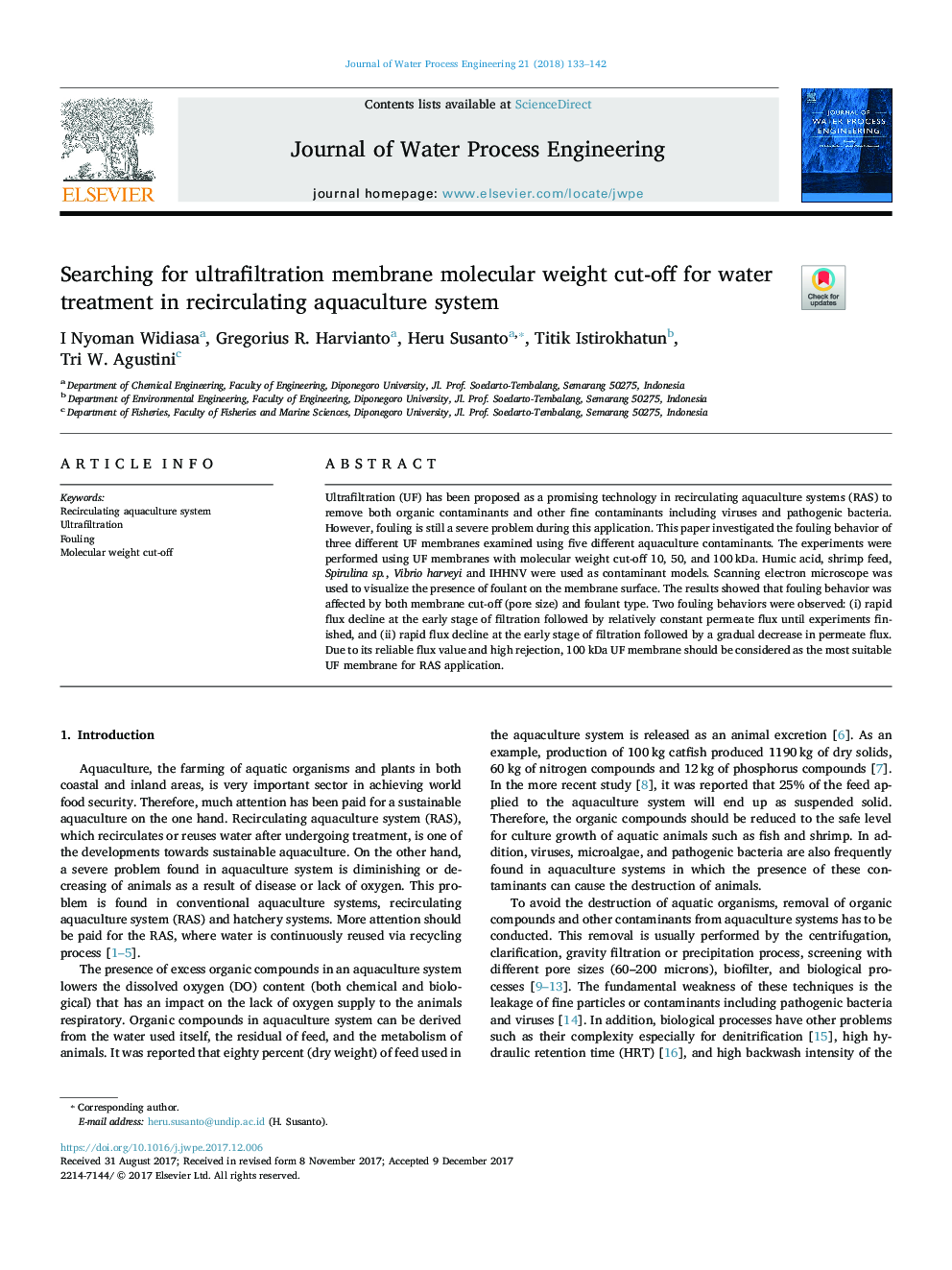| Article ID | Journal | Published Year | Pages | File Type |
|---|---|---|---|---|
| 6672038 | Journal of Water Process Engineering | 2018 | 10 Pages |
Abstract
Ultrafiltration (UF) has been proposed as a promising technology in recirculating aquaculture systems (RAS) to remove both organic contaminants and other fine contaminants including viruses and pathogenic bacteria. However, fouling is still a severe problem during this application. This paper investigated the fouling behavior of three different UF membranes examined using five different aquaculture contaminants. The experiments were performed using UF membranes with molecular weight cut-off 10, 50, and 100â¯kDa. Humic acid, shrimp feed, Spirulina sp., Vibrio harveyi and IHHNV were used as contaminant models. Scanning electron microscope was used to visualize the presence of foulant on the membrane surface. The results showed that fouling behavior was affected by both membrane cut-off (pore size) and foulant type. Two fouling behaviors were observed: (i) rapid flux decline at the early stage of filtration followed by relatively constant permeate flux until experiments finished, and (ii) rapid flux decline at the early stage of filtration followed by a gradual decrease in permeate flux. Due to its reliable flux value and high rejection, 100â¯kDa UF membrane should be considered as the most suitable UF membrane for RAS application.
Related Topics
Physical Sciences and Engineering
Chemical Engineering
Chemical Engineering (General)
Authors
I Nyoman Widiasa, Gregorius R. Harvianto, Heru Susanto, Titik Istirokhatun, Tri W. Agustini,
